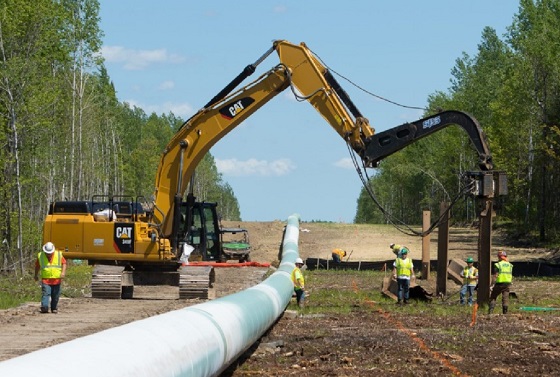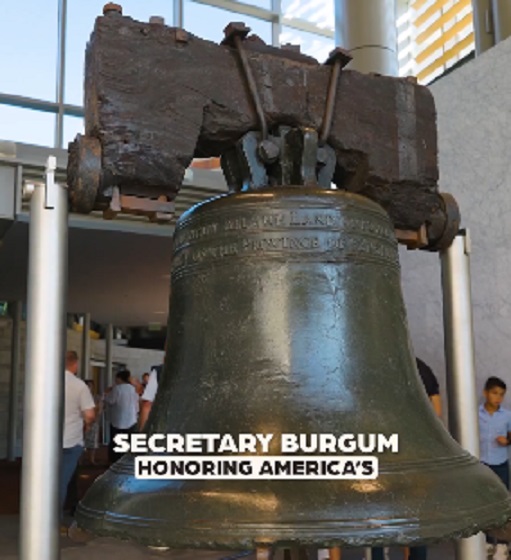Opinion
Conversation with Jordy Smith, about Wards and Gasoline Alley?

From: Jordy Smith
To: gjmarks
Sent: Mon, 09 Oct 2017 14:02:40 -0600 (MDT)
Subject: Re: Missed opportunities and possibles?
Thanks for the thoughts, Garfield:
I’ve been observing and studying to find out what Red Deer needs to do if we are to retain residences and businesses from moving to Gasoline Alley. The main thing I keep on finding is how we need to make our city into a more appealing destination in and of itself. Making the Hazlett Lake area into a district with amenities, shopping, etc, is a fantastic idea and one we should go with.
One thing I noticed regarding the conversation of how to keep businesses from moving to Gasoline Alley is how little of an advantage Red Deer has over it. Think about it, many candidates have said that businesses will come to Red Deer because we are in a prime location between Edmonton and Calgary… but so is Gasoline Alley. Some say we will attract more businesses because we have an airport (which is county owned), or because we may be getting a University, but Gasoline Alley can take advantage of these opportunities as well. The only advantage Red Deer has is through developing more high density destination locations like Hazlett Lake.
What are your thoughts on our ‘advantages’ over Gasoline Alley?
Thanks, Garfield:
As you may know, I am in favour of ward system. I have already written extensively on the subject. Here I will include the short Facebook article I wrote entitled, “A Case for Wards.”
When you hear the word ‘wards’ what do you think? Some people picture prison wards, some think of hospital wards, and many don’t know what to think. In this context, wards are districts city councilors represent at City Hall. Places such as Calgary and Edmonton have 12-14 wards, while other locations such as Red Deer and Lethbridge have none. In the latter examples, these cities have at-large elections where everybody votes for multiple candidates according to the number of seats available. (For example, Red Deer has eight council seats, so each voter selects a maximum of eight people.) Red Deer has always used this at-large system for elections, but I advocate for switching to a ward system.
Wards provide direct representation within the city council. They allow anyone who sees an issue in the city to go to their particular councilor and voice their concern. In this situation, the councilor ensures the person’s, and their district’s, voice is heard. If they don’t represent their community well, their constituents can vote for a new councilor in the next election. In our current system, a person can reach out to some or all of Red Deer’s councilors, but if the issue isn’t prevalent across the entire city, it is unlikely to enter the council meeting. Important neighbourhood issues may take a backseat to other matters in distant parts of the city. This scenario isn’t always a problem in at-large systems, but it often favours certain parts of a city more than others. This issue is especially true when a majority of councillors all live in a similar part of the city. In Red Deer, seven of our eight councillors live on the South-East side of the river; in fact, many of our past councils have had disproportionate representation from the South-East side. A ward system gives each part of Red Deer direct representation and a voice in council decisions.
A ward system facilitates a simplified election process for citizens. We have 29 people running for city council; this is the second highest number of candidates the city has ever had (the most was the 2013 election with 30 candidates). Having 29 candidates means every citizen must research and understand the positions of 29 different people to make an informed decision. The sheer amount of options encourages voters to pick people they know, names they recognize, or randomly selected candidates. These reasons for voting aren’t good for our democratic process because they put popularity ahead of platforms and solutions. In comparison, citizens of Calgary only have to consider, at most, nine councillor candidates; Edmontonians only need to research, at the most, 13. Each Red Deer citizen needs to be aware of over twice as many candidates than the two largest cities in Alberta! Wards simplify the election process for citizens, ensuring the most qualified candidates are selected based on the issues and solutions they bring.
Lastly, wards help prevent underqualified candidates with certain advantages to win elections. It takes a strong campaign for candidates to run successfully, and the at-large system makes it more challenging. In a ward system, every candidate only campaigns within their district; this contrasts an at-large system where a candidate must reach the entire city. The at-large system gives two types of candidates an advantage: incumbents, and those with financial resources. Incumbents are current councilors who are running for another term; their advantage comes from successfully running in previous elections. They already have signs, name recognition, more opportunities to talk with the press, and strong networking connections. None of these are bad, but it makes it difficult for new candidates with great ideas to win against incumbents who have already been on council for two, three, or four terms. Candidates with financial resources also have an advantage; they can mobilize and advertise their campaign to the entire city in a short period. Contrast this with other potentially great candidates who don’t have the resources to bring their message to a city of 100,000. Now, the best financial support comes from interest groups; often they have a particular agenda, so they back the candidate who helps them achieve it. This situation is problematic because it allows candidates to be elected whose interests are tied to their financiers, rather than the city. A candidate who lacks these advantages is unlikely to win, even if they are the best person for the position. Wards make it easier for candidates to run; they don’t require as many resources because they only compete in their ward. The incumbents still have some advantage, but the smaller community creates a more even competition.
Some argue Red Deer is too small to have wards, but cities such as Brandon, Manitoba, and other smaller cities in Ontario have had wards for decades. Others believe ward systems make city council more divisive and less focused on the city as a whole. Red Deer can resolve this concern by adopting a three or four-ward system, each with multiple councillors. This idea gives each ward more representation on the council, and encourages councillors to consider more than just one-eighth of the city when making decisions.
Every city begins with an at-large system. With it, Red Deer has grown to its current size. Our councillors work well with each other, making the city a better place. But Red Deer is facing new challenges, and developing wards is a part of overcoming them.
Thank you for your time and consideration.
Energy
Mistakes and misinformation by experts cloud discussions on energy

From the Fraser Institute
By Jason Clemens and Elmira Aliakbari
The new agreement (MOU) between the Carney and Alberta governments sets the foundation for a pipeline from Alberta to the British Columbia coast, at least conceptually. Unfortunately, many politicians and commentators, including the bureau chiefs for the Globe and Mail and Toronto Star, continue to get many energy facts wrong, which impairs the discussions of how best the country can and should move forward to capitalize on our natural resources.
For example, commentors often wrongly describe the tanker ban on the west coast (C-48) as a general ban on oil tankers. But in reality, the law only applies to tankers docking at Canadian ports. It does not and cannot prevent tankers from travelling the west coast so long as they’re not stationing at Canadian ports. This explains the continued oil tanker traffic in the northwest region for tankers docking in U.S. ports in Alaska. Simply put, there is not a general tanker ban on the west coast.
Commentators also continue to misrepresent the current capacity on the expanded Trans Mountain pipeline (TMX). According to the Canada Energy Regulator (CER), the average utilization of the TMX since it came online in June 2024 is 82 per cent (reaching as high as 89 per cent in March 2025). So, while there’s some room for additional oil transportation via TMX, it’s nowhere close to the “doubling” being discussed in central Canada. Critically, though, according to the CER, from “June 2024 to June 2025, committed capacity was effectively fully utilized each month, averaging 99% utilization.”
Similarly, there’s a misunderstanding by many in central Canada regarding the potential restart of the Keystone XL pipeline, which apparently President Trump is keen on. Keystone would not diversify Canada’s exports because while oil does make its way down to the southern U.S. where it can be exported, the actual sale of Canadian oil is to U.S. refineries, so our reliance on the U.S. as our near-sole export market would continue unless a west and/or east coast pipeline is developed.
There also continues to be an artificial and costly connection made between Ottawa removing the arbitrary emissions cap on greenhouse gases by the oil and gas sector and the approval of a new pipeline with the proposed Pathways carbon capture project, which is a collaboration between five of Canada’s largest oil producers. This connection was galvanized in the MOU.
The idea behind the project is to reduce (conceptually) the amount of greenhouse gas (GHG) emitted from oil extraction and transportation projects linked with Pathways. The Pathways project produces no economic value or product—it simply collects and stores GHG emissions—and reports suggest the total cost for the first phase of the project will reach $16.5 billion.
Should Canadians care about adding costs related to GHG mitigation? There are several factors to consider. First, Canada is already a low-GHG emitting producer of oil. According to the Carney government’s first budget (page 105, chart 1.5 which ranks the world’s 20 top oil producers based on their GHG emissions per unit of output), Canada already ranks 7th-lowest in terms of emissions. And more importantly, it’s lower than every country—Venezuela, Russia, Iraq and Mexico—that produces a similar type of oil as Canada. Any resources spent further reducing GHG emissions via carbon capture will result in small incremental gains contrasted with large costs (again, at least $16.5 billion). A number of analysts have already raised concerns about the investment and competitiveness implications of increasing the cost structures for Alberta producers.
Second, according to the federal government, in 2022 Canada produced 1.4 per cent of global GHG emissions, and the oil and gas sector produced roughly one-quarter of those emissions. In other words, if Canada eliminated all GHG emissions from the oil sector via carbon capture, the process would consume vast amounts of scarce resources (i.e. money) and result in a nearly undetectable change in global GHG emissions. One can only conclude that this is much more about international virtue-signalling than the actual economics and environmental implications of Canada’s potential energy projects.
At a time when Canada is struggling with crisis levels of private business investment, falling living standards and as the Bank of Canada described, a break-the-glass crisis in productivity growth, it’s clearly not wise to spend tens of billions of dollars on projects that might make politicians and bureaucrats feel better and enable them to use near Orwellian language like “zero-emissions oil” but that actually deliver almost no detectable environmental benefits.
To borrow our prime minister’s favourite phrase, kickstarting Canada’s oil and gas sector is the easiest way to catalyze economic growth given our vast energy reserves, know-how in the sector, and high productivity. To do so, we need a national dialogue rooted in facts.
Energy
Ottawa and Alberta’s “MOU” a step in the right direction—but energy sector still faces high costs and weakened competitiveness

From the Fraser Institute
By Tegan Hill and Elmira Aliakbari
The Memorandum of Understanding (MOU) between Alberta Premier Danielle Smith and Prime Minister Mark Carney, which includes a new oil pipeline to BC’s northwest coast, offers some hope for Canada’s energy future. While this agreement is a step in the right direction, it puts Alberta’s energy sector on the hook to secure access to new markets while facing higher costs and reduced competitiveness.
Earlier this year, Smith demanded then-newly elected Prime Minister Carney repeal nine “bad laws” stifling oil and gas investment, which has collapsed by nearly 61 per cent in the province since 2014, falling from $64.7 billion to $25.4 billion in 2024 (inflation-adjusted).
One key policy on the list was the proposed federal emissions cap, which would have applied exclusively to the oil and gas sector. According to the MOU, Canada will not move forward with the cap, which is a welcome change. Indeed, multiple analyses showed that the cap would have inevitably resulted in a production cut, costing the economy billions and resulting in tens of thousands of job losses. And, with oil and gas demand continuing to climb, the cap would have shifted production to other countries with lower environmental and human rights standards such as Iran, Russia and Venezuela.
Scrapping the Clean Electricity Regulations (CER) was also one of Smith’s demands. While the MOU states that “Canada and Alberta remain committed to achieving net zero greenhouse gas emissions by 2050”, the CER as it applies to the province will be suspended for the time being. Again, this is a critical and positive change for a province where 85 per cent of its electricity comes from fossil fuels—a larger share than nearly any other province. (For perspective, in Quebec, over 85 per cent of its electricity comes from hydro.) The Alberta Electric System Operator (AESO) estimates it would cost $44 to $54 billion to decarbonize Alberta’s grid by 2041—a 30 to 36 per cent spending increase—costs that ultimately fall on consumers.
A third key policy on Smith’s list of nine bad laws was repealing Bill C-48, which banned large oil tankers off BC’s northern coast from docking in Canadian ports. According to the MOU, there may be a limited exemption to the ban. Specifically, it states that to enable the export of bitumen there may be an “appropriate adjustment.” The law effectively prevents Canadian producers from accessing Asia and other international markets. Crucially, the legislation applies only to tankers docking in Canadian ports—U.S. and foreign tankers continue to operate freely in the same waters accessing U.S. ports. In other words, the law exclusively hinders Canada’s competitiveness—creating a carve out for one pipeline will not fix this problem.
All of these policy changes or exemptions are conditional on stronger industrial carbon pricing and support for the massive multibillion-dollar Pathways project–a 400-kilometer pipeline transporting carbon trapped at oil facilities to an underground storage facility near Cold lake Alberta and led by a group of Canada’s five largest oil companies. Earlier this year, Alberta froze its industrial carbon tax at $95 per tonne through 2026, but the MOU states that the system will ramp up to a minimum price of $130/tonne. This will increase the cost of producing, processing and transporting oil, at a time when a surge in global oil production and downward pressure on oil prices is expected. Ultimately, this will widen the competitiveness gap between Alberta and many other jurisdictions, such as the United States, that do not have comparable carbon pricing in place.
The agreement is also conditional on the $16.5 billion (minimum estimate) Pathways project to capture, sequester and store carbon underground. Adding carbon capture technology would increase production costs by roughly US $1.2-$3 per barrel for oil sands mining operations and US $3.6-$4.8 for oil sands facilities that use steam. These higher costs further erode the province’s competitiveness and won’t help in attracting private sector investment.
The memorandum of understanding makes some important strides for Canada’s energy future and is certainly an improvement on the status quo, but it still leaves Alberta’s energy sector facing higher costs and weakened competitiveness, and more broadly doesn’t remove the many impediments to large-scale development of our oil sector.
-

 Business2 days ago
Business2 days agoBlacked-Out Democracy: The Stellantis Deal Ottawa Won’t Show Its Own MPs
-

 Agriculture2 days ago
Agriculture2 days agoHealth Canada pauses plan to sell unlabeled cloned meat
-

 Crime2 days ago
Crime2 days agoB.C.’s First Money-Laundering Sentence in a Decade Exposes Gaps in Global Hub for Chinese Drug Cash
-

 Crime2 days ago
Crime2 days agoFBI Seizes $13-Million Mercedes Unicorn From Ryan Wedding’s Narco Network
-

 International2 days ago
International2 days agoAmerica first at the national parks: Trump hits Canadians and other foreign visitors with $100 fee
-

 Banks2 days ago
Banks2 days agoThe Bill Designed to Kill Canada’s Fossil Fuel Sector
-

 armed forces1 day ago
armed forces1 day ago2025 Federal Budget: Veterans Are Bleeding for This Budget
-

 Business2 days ago
Business2 days agoFederal major projects list raises questions








